
The Ian Rutledge Starter
¥377.59
Get four mystery novels from?New York Times?bestselling author Charles Todd's Inspector?Ian Rutledge Mysteries series in one e-book, including:?A Test of Wills,?A Long Shadow,?A False Mirror,?and?A Pale Horse.?Set in England in 1919, each story features war-damaged Scotland Yard inspector Ian Rutledge in?mysteries?brilliantly evoking post-World War?I?Great Britain?and introduces readers to one of crime fiction's most compelling?protagonists.A Test of Wills—It is 1919, and the War to End All Wars has been won. But for Scotland Yard Inspector Ian Rutledge, recently returned from the battlefields of France, there is no peace. Suffering from shell shock, Rutledge plunges into his work to save his sanity. But his first assignment is a case certain to spell both personal and professional disaster.A Long Shadow—A story that immerses readers in the sights and sounds of post-war Great Britain, as the damaged policeman pursues answers to a constable’s slaying and the three-year-old mystery of a young girl’s disappearance in a tiny Northamptonshire village.A False Mirror—A love triangle turned deadly sends Scotland Yard Inspector Ian Rutledge to a small town simmering with secrets.A Pale Horse—A body found in the ruins of an ancient abbey sends Scotland Yard Inspector Ian Rutledge off to find a killer, in another superb atmospheric mystery by Charles Todd.

The Secret Zoo Complete Collection
¥377.59
Five complete books in one! Noah, Megan, Richie, and Ella are the Action Scouts: friends whose tree house overlooks the Clarksville City Zoo. When they discover a magical world hidden within the zoo, they are swept away on an adventure in which penguins can fly, a mysterious figure lurks in the shadows, and the scouts are enlisted to help Mr. Darby, who is in charge of the Secret Zoo.The Secret Zoo: Noah, his sister Megan, and their best friends, Richie and Ella, live next door to the zoo. Megan is the first to notice the puzzling behavior of some of the animals. One day Megan disappears, and her brother and their friends realize it's up to them to find her. Once inside, will they discover there's much more to the Clarksville City Zoo than they could ever have guessed?The Secret Zoo: Secrets and Shadows: Noah and his must train to become Crossers, members of a secret society who freely travel to the Secret Zoo and back, helping to defend its borders. But now that the monstrous sasquatches are on the loose and the evil Shadowist is plotting destruction, will Noah, Megan, Ella, and Richie have what it takes to survive?The Secret Zoo: Riddles and Danger: Will the scouts be able to fight against the dangerous sasquatches who have escaped the zoo and threaten their town?The Secret Zoo: Traps and Specters: On Halloween night, Noah and his friends must battle terrifying sasquatches that have attacked their own elementary school. Little do they know the sasquatches are a trap! When DeGraff captures three of Noah's friends, can the kids ally with their rivals in order to save every person and animal in the zoo—all while dodging the town's police?The Secret Zoo: Raids and Rescues: Even in the Secret Zoo, there are dangers . . . and forbidden places. When the scouts' friends are held in the off-limits sector—a never-ending maze of aquariums—Noah, Megan, Richie, and Ella must be at their most courageous.

The Joe Hill
¥377.59
Get four bone-chilling novels of psychological and?supernatural?suspense from?New York Times?bestselling author Joe Hill in one e-book, including:?Heart-Shaped Box,?20th Century Ghosts,?Horns, and?NOS4A2. Each publication of Hill is?beautiful?textured,?deliciously scary, and greeted with the sort of overwhelming critical?acclaim that is rare for works?of skin-crawling supernatural terror. Read on if you dare to see what all the well-deserved hoopla is about.

Adriana Trigiani's Valentine Collection
¥377.59
From New York Times bestselling author Adriana Trigiani comes her beloved Valentine trilogy, now available in one volume for the first time. This eBook collection includes Very Valentine, Brava, Valentine, and The Supreme Macaroni Company.

Nature of Diversity
¥376.70
All living things on earth-from individual species to entire ecosystems-have evolved through time, and evolution is the acknowledged framework of modern biology. Yet many areas of biology have moved from a focus on evolution to much narrower perspectives.Daniel R. Brooks and Deborah A. McLennan argue that it is impossible to comprehend the nature of life on earth unless evolution-the history of organisms-is restored to a central position in research. They demonstrate how the phylogenetic approach can be integrated with ecological and behavioral studies to produce a richer and more complete picture of evolution. Clearly setting out the conceptual, methodological, and empirical foundations of their research program, Brooks and McLennan show how scientists can use it to unravel the evolutionary history of virtually any characteristic of any living thing, from behaviors to ecosystems. They illustrate and test their approach with examples drawn from a wide variety of species and habitats.The Nature of Diversity provides a powerful new tool for understanding, documenting, and preserving the world's biodiversity. It is an essential book for biologists working in evolution, ecology, behavior, conservation, and systematics. The argument in The Nature of Diversity greatly expands upon and refines the arguments made in the authors' previous book Phylogeny, Ecology, and Behavior.

Cedar Cove Collection (Books 1-6)
¥376.21
Perfect for fans of Maeve Binchy' - Candis Welcome to Cedar Cove – a small town with a big heart! Step into the wonderful world of Cedar Cove with the first six books in Debbie Macomber’s bestselling series bundled together for an indulgent escape. Including: 16 Lighthouse Road, 204 Rosewood Lane, 311 Pelican Court, 44 Cranberry Point, 50 Harbour Street and 6 Rainier Drive. Make time for friends. Make time for Debbie Macomber.

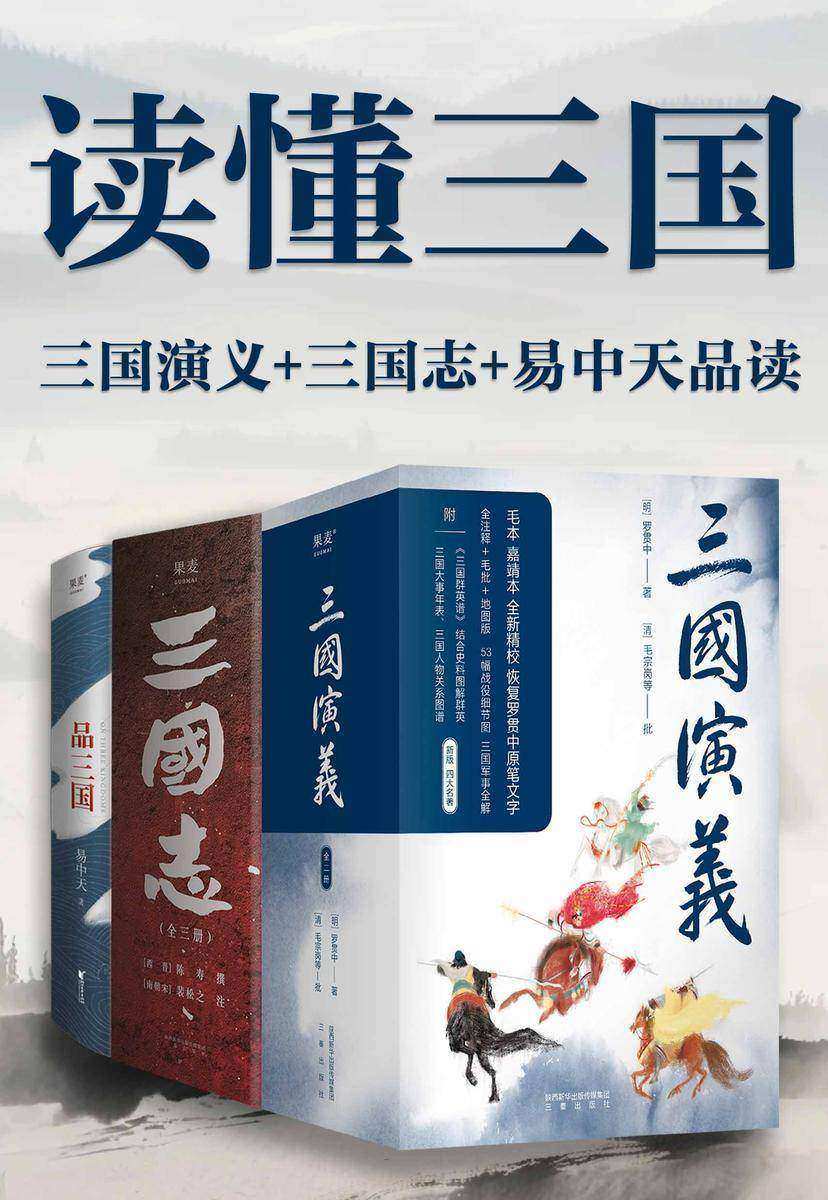
读懂三国:三国演义+三国志+易中天品读
¥375.00
【读三国,更要品味三国】 读过三国的人未必真正读懂三国!为什么曹操被称作“治世之能臣,乱世之奸雄”?诸葛亮的《出师表》里藏着怎样的权力密码?赤壁之战背后竟有多层博弈逻辑? 三国演义+史书原文+易中天品读,一套带你细品三国、读懂三国。

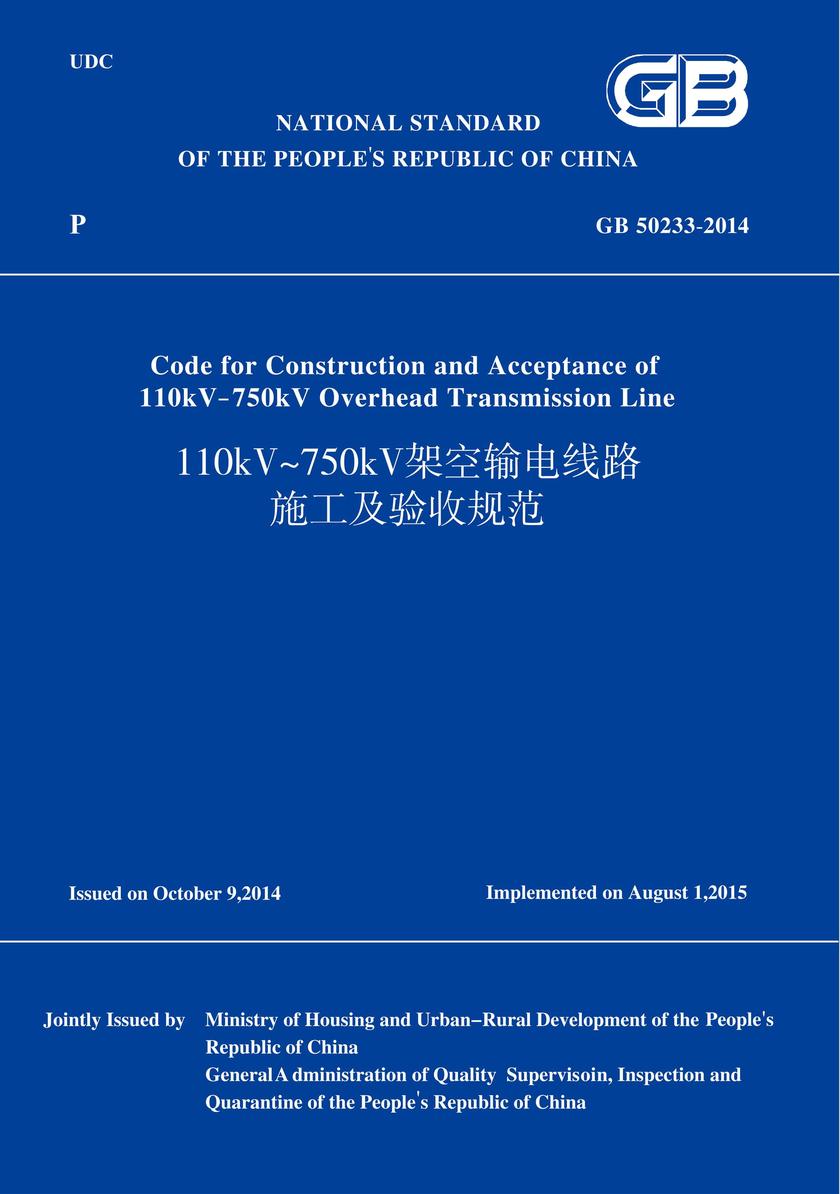
GB 50233-2014 110kv~750kV架空输电线路施工及验收规范 (英文版)
¥375.00
中华人民共和国住房和城乡建设部公告 2019年 第338号 住房和城乡建设部关于发布《电气装置安装工程 接地装置施工及验收规范》等10项工程建设标准英文版的公告 现在批准《电气装置安装工程 接地装置施工及验收规范》(GB 50169-2016)《±800kV直流换流站设计规范》(GB/T 50789-2012)《1000kV系统电气装置安装工程 电气设备交接试验标准》(GB/T 50832-2013)《光伏发电站施工规范》(GB/T 50794-2012)、《光伏发电工程验收规范》(GB/T 50796-2012)、《电气装置安装工程 电气设备交接试验标准》(GB 50150-2016)《电力设施抗震设计规范》(GB 50260-2013)《110kV~750kV架空输电线路施工及验收规范》(GB 50233-2014)、《电气装置安装工程 串联电容器补偿装置施工及验收规范》(GB 51049-2014)英文版。工程建设标准英文版与中文版出现异议时,以中文版为准。 工程建设标准英文版由住房和城乡建设部组织中国计划出版社出版发行。 中华人民共和国住房和城乡建设部 2019年12月11日

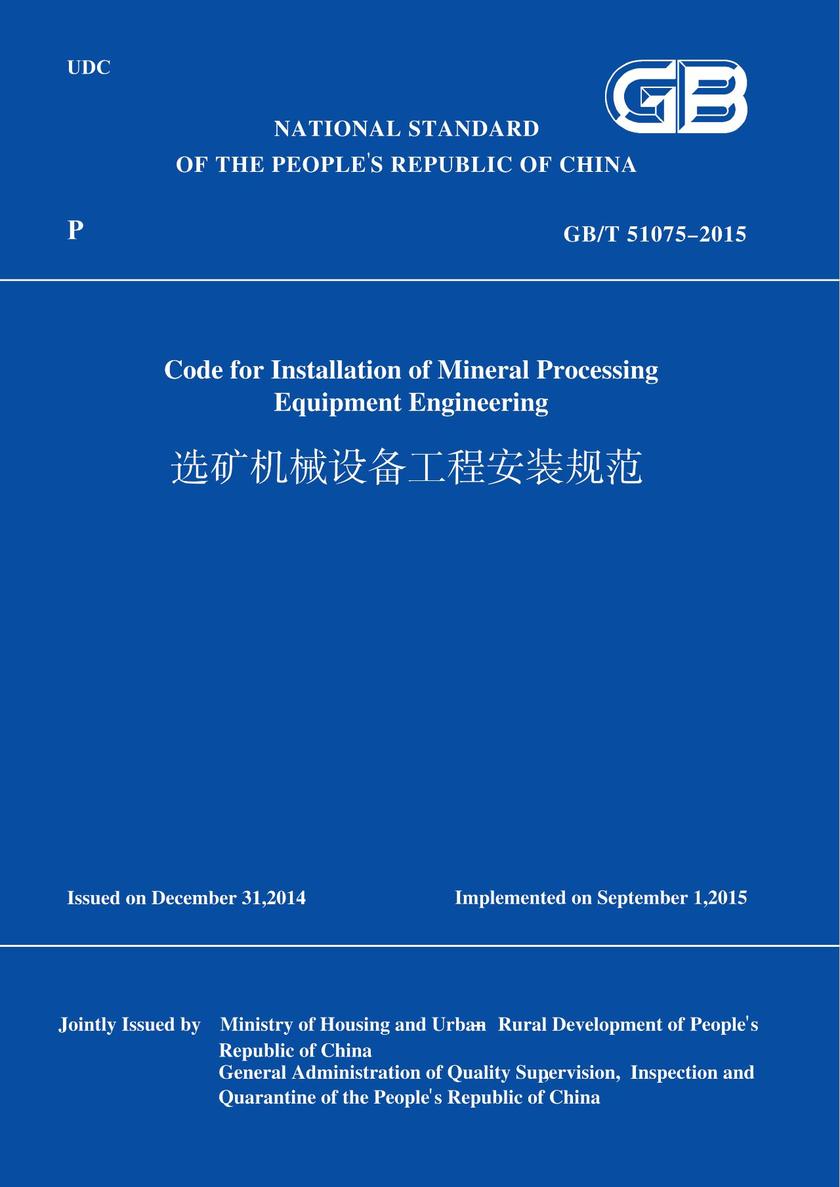
GB/T51075-2015选矿机械设备工程安装规范(英文版)
¥375.00
《选矿机械设备工程安装规范(英文版 GB/T 51075-2015)》是根据建设部建标[2006]136号文《"关于印发"2006年工程建设国家标准制定、修订计划"的通知》的要求,由中国三冶集团有限公司会同有关单位共同编制完成的。 《选矿机械设备工程安装规范(英文版 GB/T 51075-2015)》在编制过程中,编制组行了广泛的调查研究,认真总结了我国近20年来选矿机械设备工程及验收等方面的经验,广泛征求了有关单位和专家的意见,对规范条文反复讨论修改,*后经审查定稿。 《选矿机械设备工程安装规范(英文版 GB/T 51075-2015)》共分9章,包括总则,术语,基本规定,设备基础、地脚螺栓和垫板,设备和材料场,破碎粉磨及筛分设备,分级及选别设备、脱水设备、给矿排矿设备等。

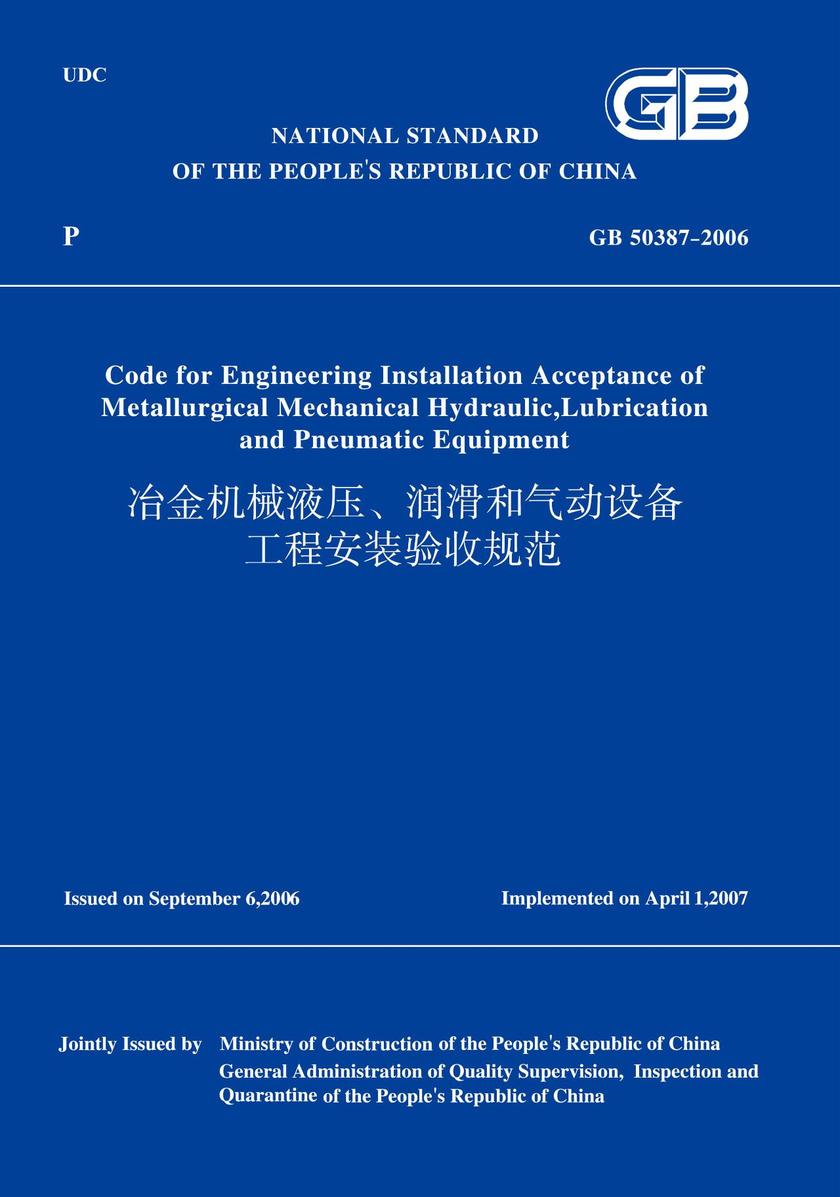
GB 50387-2006 冶金机械液压、润滑和气动设备工程安装验收规范 (英文版)
¥375.00
GB 50387-2006 冶金机械液压、润滑和气动设备工程安装验收规范 (英文版)

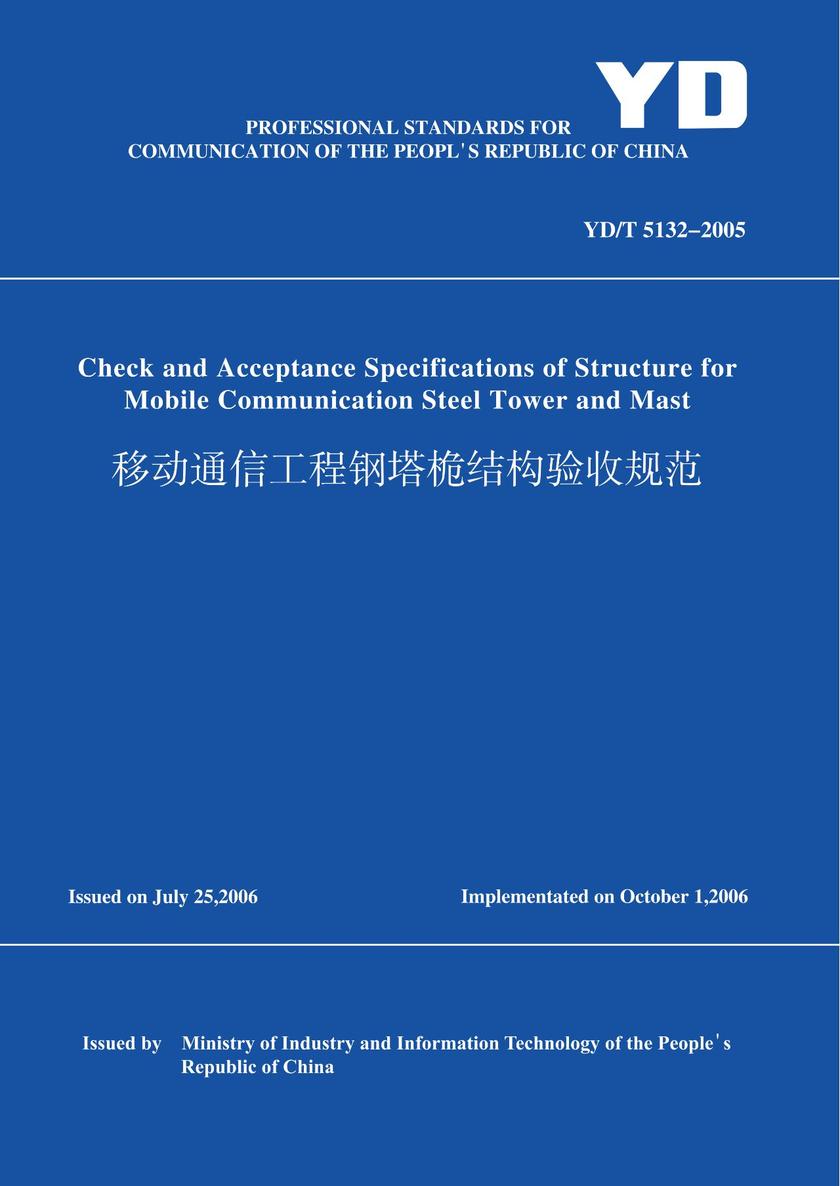
YD/T5132-2005移动通信工程钢塔桅结构验收规范(英文版)
¥375.00
本规范适用于自立式塔架、桅杆、单管塔等移动通信工程钢塔桅结构的验收。本规范共分9章和8个附录主要内容包括:总则、术语、基本规定、原材料及成品进厂、焊接工程、钢零件及钢部件加工工程、防腐工程、塔桅钢结构安装工程、移动通信工程钢塔桅结构验收等。

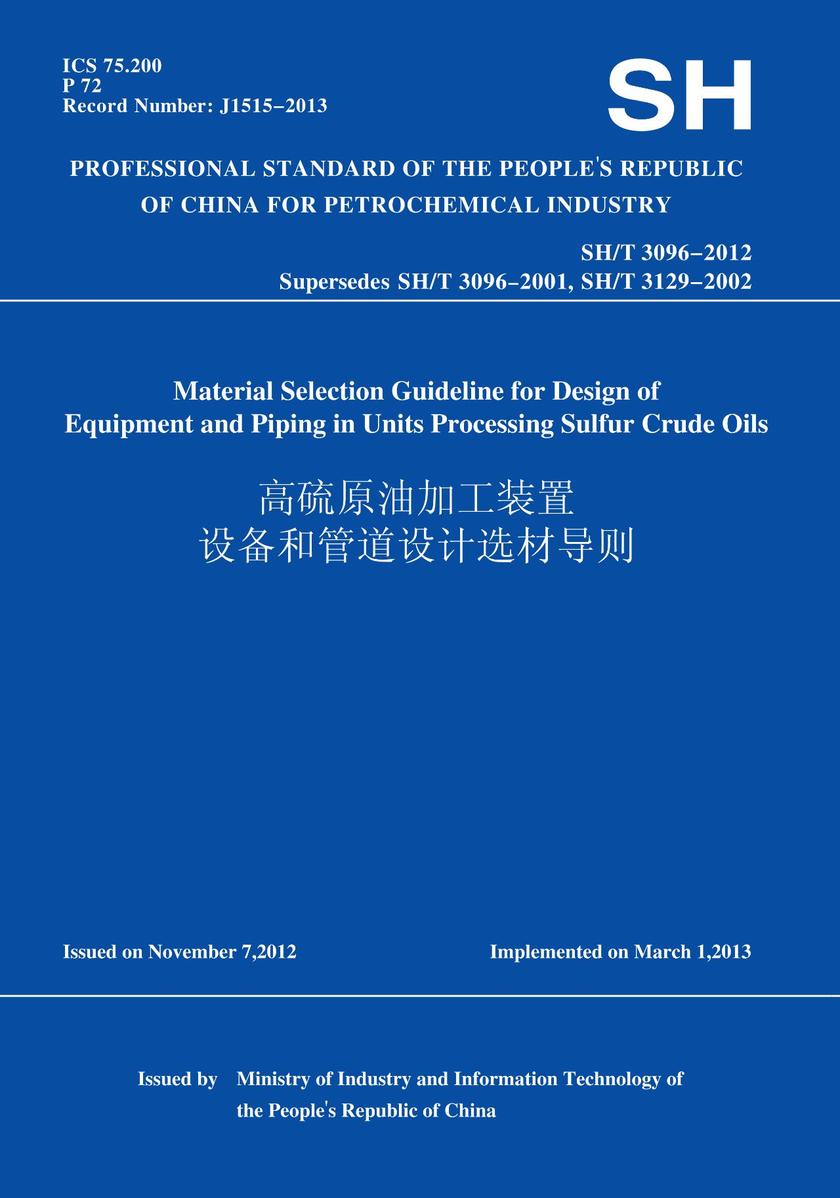
SH/T 3096-2012 高硫原油加工装置设备和管道设计选材导则 (英文版)
¥375.00
SH/T 3096-2012 高硫原油加工装置设备和管道设计选材导则 (英文版)


人邮智元经典丛书系列(套装全10册)
¥374.99
暂无
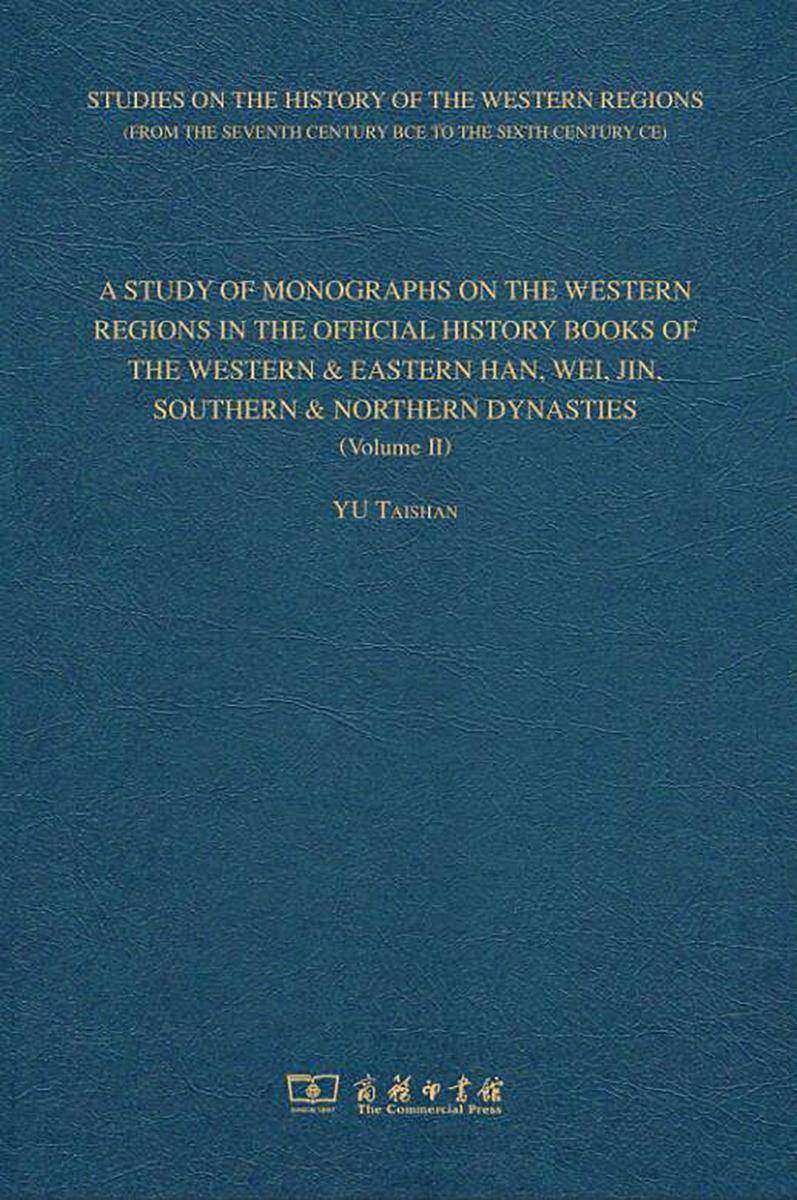
两汉魏晋南北朝正史西域传研究
¥374.40
A STUDY OF MONOGRAPHS ON THE WESTERN REGIONS IN THE OFFICIAL HISTORY BOOKS OF THE WESTERN & EASTERN HAN, WEI, JIN, SOUTHERN & NORTHERN DYNASTIES是同作者《两汉魏晋南北朝正史西域传研究》一书的英文版,是作者长期研究西域史和古代中外关系史,对塞种、贵霜、嚈哒以及两汉魏晋南北朝与西域关系史的论着。 作者就各篇西域传所见西域文化、宗教、习俗、制度,以及人种、语言、文字作了分门别类的研究,结集而成《两汉魏晋南北朝正史西域传研究》。本书和《两汉南北朝正史西域传要注》为姊妹篇。两书不仅为两汉魏晋南北朝正史西域传有关西域的记载提供了一个系统的注解,而且首次解读了两汉魏晋南北朝正史西域传的认知和阐述系统。这对于深理解两汉魏晋南北朝的政治、经济和文化等均有参考价值,其意义已经逸出了西域史研究的范畴。

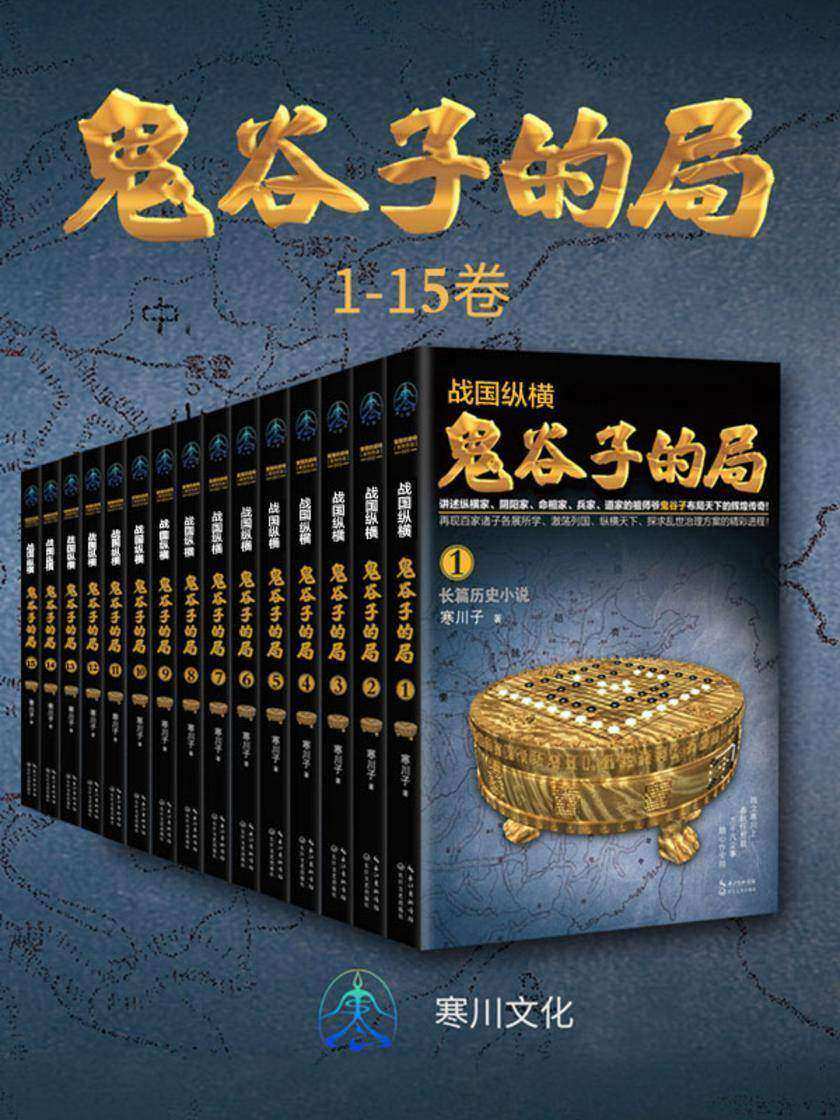
战国纵横:鬼谷子的局(1-15卷)
¥374.00
东方版“权力的游戏”《战国纵横:鬼谷子的局》是一部长篇历史小说。讲述谋略家、兵法家、纵横家、阴阳家、道家共同的祖师爷——鬼谷子布局天下的辉煌传奇! 战国中期,在云梦山的幽谷中隐居一位被尊称为鬼谷子的老人。 在他身后的二千多年中,谋略家以他为宗,军事家认他为圣,纵横家奉他为祖,命相家拜他为祖师,仙道家尊他为真人。中国人将他视作智慧的化身,敬作无所不能的神龙。


爆笑休闲系列套装(共11册)
¥373.24
套装包括《花小烙漫画:原来科普知识这么有趣》《不白吃漫画食物简史》《赛雷三分钟漫画:病毒、细菌与人类》《风雨里做个大人,阳光下做个小孩》《十万个小肉段》《你说的那个朋友是不是你自己》《黑心企业职员变成猫》《沉睡的线条世界》《一条草鱼》《狗哥杰克苏》《可是你真的真的很可爱》

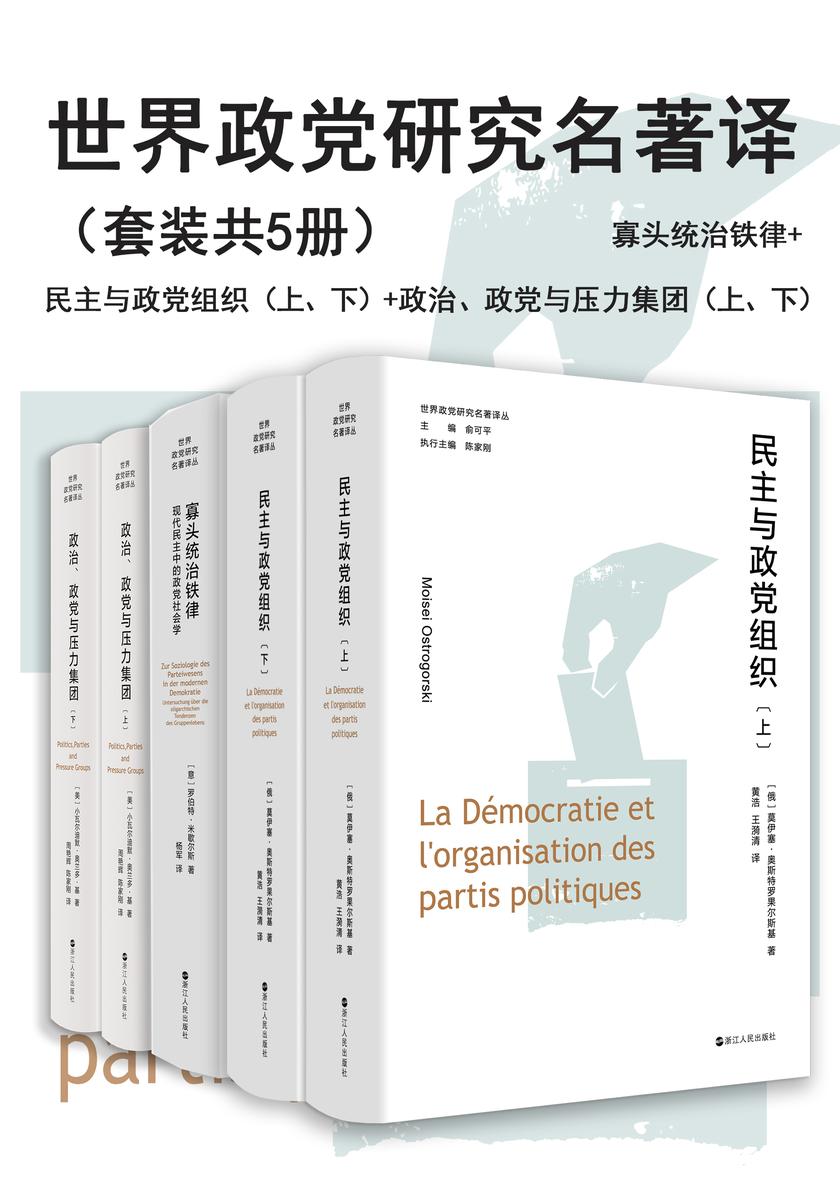
世界政党研究名著译(套装共5册)
¥373.20
本书从观念、组织、制度等方面全景式展现了19世纪英美两国的政党政治和民主运作过程。在工业革命与思想变革不断行、旧统治阶级与新兴势力持续博弈、利益集团互相勾结之下,政党组织、大会与代表制度、选举制度等民主政治的要素不断形成和发展。在这样一种政治演中,政党组织利用公民精神的疲软和人们对政党的狂热,操纵选民从而攫取权力,成为最大赢家。 作者在书里批判了渗透在英美民主制中的政治形式主义,认为政党政治下的民主,以对政党的虔诚取代个人良知,释放出普遍的依赖心理,束缚了公共精神,让懦弱裹挟了民主政府的生命。他提出,如果民主制有未来,那么应该将其建立在理性与自由之上,而不是在情绪与煽动之上。 由于例证扎实、论述详尽、分析透彻,本书成为民主与政党制度研究领域的奠基性巨著,并对后来马克斯·韦伯和罗伯特·米歇尔斯的研究产生了深远影响。


大师精华课系列(套装共7册)
¥373.10
《管理学原来很有趣》是一本专门介绍管理学的图书,其特点是以古今中外的管理学大师口述的方式,讲述其思想精华。本书虚拟了16堂管理学大家之课,分别从16个方面讲述管理学的内容。在授课过程中,作者安排了读者与管理学大师们的互动交流,从而更好地帮助读者理解管理学内容。本书力求让读者在轻松愉快的氛围里,熟练地掌握管理学知识,学到管理技能。 《经济学原来很有趣》是一本通过古今中外经济学大师之口,阐述经济学思想精华的图书。本书虚拟了16堂经济学大家之课,从16个方面解析经济学相关理论。在授课过程中,作者安排了读者与经济学大师们的互动交流,从而更好地帮助读者理解经济学内容。本书可以让读者在轻松愉快的氛围里,学会用经济学眼光看问题。渴望在欢乐气氛中学习经济学知识的读者,请一定不要错过此书! 《传播学原来很有趣》本书围绕生活中经常出现的传播学现象,选取了16位享誉世界的传播学大师,把他们的观点以一种通俗易懂而又妙趣横生的方式介绍给读者。 本书以课堂演讲的方式,让每位传播学导师来讲解自己的传播学理论。为了更好地帮助读者理解和应用,所选择的内容均是传播学经典内容,并且多与日常生活关联颇深。本书适合那些对传播学感兴趣,以及想要深入了解传播学经典的读者。 《历史学原来很有趣》不同于以往的历史学教材,它以课堂讲授方式,将历史学知识娓娓道来。在这本书中,希罗多德、汤因比、塔西佗、司马迁等16位世界著名历史学家,会有意识地提出一些问题,引导读者思考,与读者进行有趣的互动,让读者轻松掌握历史学相关知识。 《历史学原来很有趣》还设置了一个刚进入职场的人设—李彤,通过她在学习中对历史学的一些感悟,以及将历史学运用到工作中所取得的一些成绩,将历史学与工作、生活紧紧结合起来,让读者学以致用。 对历史学感兴趣,想要了解、学习历史学的读者,千万不要错过此书。 《哲学原来很有趣》本书主要围绕生活中经常出现的哲学命题,选取了16位古今中外的哲学名家,将他们的观点用一种通俗易懂且趣味横生的方式介绍给读者。本书以课堂演讲的方式让各位哲学导师讲解自己对各类哲学命题的看法,在观点选择方面,更注重读者的理解与应用。因此本书非常适合对哲学感兴趣的读者和想要了解哲学基本知识的读者。 《逻辑学原来很有趣》本书围绕生活中经常出现的逻辑学问题,选取16位享誉世界的逻辑学名家,把他们的观点以一种通俗易懂又趣味横生的方式介绍给读者。本书以课堂演讲的方式,让各位逻辑学导师讲解自己关于各类逻辑学命题的看法。同时,在观点的选择方面,更加注重读者的理解与应用。本书非常适合对逻辑学感兴趣的读者,以及想要了解逻辑学基本知识的读者。 《心理学原来很有趣》本书主要围绕生活中经常出现的心理学问题,选取了16位享誉世界的心理学名家,把他们的观点以一种通俗易懂、饶有趣味的方式介绍给读者。本书以课堂演讲的方式,让读者通过各位心理学导师讲解自己关于各类心理学命题的看法获得新知。在观点方面,本书更加注重读者的理解应用。因此,本书非常适合对心理学感兴趣,以及想要了解心理学基本知识的读者。

Just Below the Line
¥372.78
With America on the brink of the largest number of older adults and persons with disabilities in the country's history, the deceleration in housing production during the first decade of the twenty-first century, and a continued reliance on conventional housing policies and practices, a perfect storm has emerged in the housing industry. The lack of fit between the existing housing stock and the needs of the U.S. population is growing pronounced. Just as housing needed to be retooled at the end of WWII, the American housing industry is in dire need of change today. The South-with its high rates of poverty, older residents, residents with disabilities, extensive rural areas, and out-of-date housing policies and practices-serves as a "canary in the coal mine" for the impending, nationwide housing crisis. Just Below the Line discusses how reworking the policies and practices of the housing industry in the South can serve as a model for the rest of the nation in meeting the physical and social needs of persons with disabilities and aging boomers. Policy makers, designers, builders, realtors, advocates, and housing consumers will be able to use this book to promote the production of equitable housing nationwide.Published in collaboration with the Fay Jones School of Architecture.


“自我”与“世界”系列书系(套装15册)
¥372.30
锻炼 锻炼只是人类进化过程中近期才出现的现象。哈佛大学进化生物学家丹尼尔·利伯曼凭借自己多年在世界各地的研究与经验,向我们讲述为什么我们从未进化出锻炼的本能。 在这本打破神话的书中,利伯曼告诉我们,锻炼,并不是人类的本能。利伯曼从人类学和进化学的角度探讨了我们的身体,破解了关于锻炼的12个谬误,教我们可以正确地对待自己的身体并进行正确的身体活动,帮助那些对锻炼感到焦虑、困惑和纠结的人们把锻炼重新放到正确的位置上。 性的进化 关于人类性征的进化,没有人比贾雷德·戴蒙德更有资格做出解释。本书力图解释人类的性行为是如何演变为现在的模式的,包括女性的绝经期、人类社会中男性的角色、离群性交、为取乐而非传宗接代的性交,以及女性乳房早于发挥喂乳功用时的隆起等。通过一个个有趣的案例,戴蒙德帮助我们梳理了人类性征进化历程的多个方面,写出了一部迷人的、令人惊叹的经典之作。 智能的结构 加德纳初次在《智能的结构》中提出人类具有的八种智能,对多元智能理论进行多维且系统的介绍,向传统的心理学观点和流行的智商测试发起了有力的挑战。加德纳依据生物学、人类学等学科的研究成果,初次提出了“智能”的概念,并确认符合“智能”的八个判据,详细逐一地描述了七种智能:语言智能、音乐智能、逻辑-数学智能、空间智能、身体-动觉智能、人际智能、自我认知智能、博物学家智能,开创了“多元智能理论”,加德纳因此在世界一举成名! 人类的起源 理查德·利基以直立人骨架“图尔卡纳男孩”这一20世纪古人类学*重要的发现为起点,清晰明了地勾画了人类进化的四大阶段:700 万年前人科的起源;两足行走的猿类的“适应性辐射”;250 万年前人属的起源;现代人的起源。除此之外,《人类的起源》还将带领我们利用有限的证据,提出种种出人意料的假说,推断人类的艺术、语言和心智起源之谜。 进化的偶然 进化生物学家肖恩·卡罗尔从古生物学、地质学、进化生物学、基因科学等众多领域的全新发现入手,结合宏大至小行星撞击地球,微小至基因突变的众多妙趣横生的实证,向你展示“偶然”的强大造物之力。与此同时,卡罗尔剥茧抽丝地论证困扰达尔文的问题“突变和自然选择,到底哪一个才是真正的发明者”,并帮助你厘清突变、自然选择、适应之间的关系,以及它们在进化过程中所起的作用。 生命:进化生物学、遗传学、人类学和环境科学的黎明 生命是什么?这本书集合了世界*的生物学家、遗传学家和进化理论家来思考这个问题,众多“科学明星”同台辩论,在唇枪舌剑中开启生命科学的未来。 从生命的起源到进化之美、从破解DNA密码到构建超级*体、从生物技术带来的希望到致命病毒的未知威胁,本书回顾了人类在生命历程中走过的路,也展望了我们未来的方向。 人体的故事 这是一部从现代语境出发、回溯人类历史的人体进化简史,一本从进化、健康与疾病的相互关系着手、审视人体命运的权威著作。 作为哈佛大学进化生物学教授,作者丹尼尔·利伯曼在书中汇集了多年来针对人体进化展开的深入研究,详细讲述了人类如何一步步落入了当前失配性疾病频发的泥沼。而进化无疑是帮助我们寻找病因、预防并治疗失配性疾病的一剂良方,得以让我们重新思考人类的过去、现在和未来! 当下的启蒙 史蒂芬·平克对当前世界进行了全景式的评述,让读者了解人类状况的真相,人类面临怎样的挑战,以及该如何应对这些挑战。他呼吁我们避开惊悚的头条新闻和灰暗的末日预言,相反,用数据说话:通过75幅震撼的图表,平克论证人类的寿命、健康、食物、和平、知识、幸福等都呈向上趋势,这种趋势不仅限于西方,而是遍及全世界。这是启蒙运动的礼物——理性、科学和人文主义促进了人类的进步。 《当下的启蒙》凭借智识深度和优雅文笔证明:我们永远不会拥有一个完美的世界,而寻找一个完美的世界也是危险的举动。但是,如果继续运用知识来促进人类的繁荣,即将取得的进步则是无限的。 人类的价值 人类之所以能够适应各种不同的环境,并解决各种问题,主要依靠的不是个人智慧,而是“累积性的文化适应”, 以及更长时间维度下,不同文化之间的达尔文式的自然选择过程。这里的“文化”主要是指各种社会规范和道德价值。博伊德认为,不仅人类是自然世界的一部分,人类文化也是自然世界的一部分。文化使人类成了一种与众不同的生物。累积性文化进化是人类*大的,也是*独特的优势。 基因之河 基因从何而来?它又将走向何方?理查德·道金斯以其特有的智慧和对复杂事物条分缕析的能力让我们得以直面这些谜题。《纽约时报》将他的写作风格描述为“那种让读者感觉自己像个天才的写作”。 道金斯将生命的进化过程比作一条基因之河,在时间长河中,基因相互碰撞和重组,不断分叉,不断消亡。值得一提的是,道金斯还在书中分析了实现生物信息在宇宙范围内爆炸需要跨越的各个可能门槛,让我们得以对生命未来会走向何方有所想象。 生命:进化生物学、遗传学、人类学和环境科学的黎明 生命是什么?这本书集合了世界*的生物学家、遗传学家和进化理论家来思考这个问题,众多“科学明星”同台辩论,在唇枪舌剑中开启生命科学的未来。 从生命的起源到进化之美、从破解DNA密码到构建超级*体、从生物技术带来的希望到致命病毒的未知威胁,本书回顾了人类在生命历程中走过的路,也展望了我们未来的方向。 宇宙 “宇宙暴胀理论之父”阿兰·古斯、“弦理论之父”伦纳德·萨斯坎德、“永恒混沌暴胀理论之父”安德烈·林德、诺贝尔物理学奖获得者弗兰克·维尔切克、国际权威的额外维度物理学大师丽莎·兰道尔、加拿大圆周理论物理研究所创始人之一李·斯莫林、数学大师贝努瓦·曼德尔布罗特……每一个名字都如雷贯耳,他们对宇宙的过去与未来、对人类在我们这个宇宙中的位置等“终极问题”的头脑风暴,必然火花四溅! 白板 关于主流人性论的颠覆性反叛,破而后立,进而建立起新的意义和道德观念,重塑对人性的信心。 阐明人性的本源、内涵及局限,追溯人类诸多苦难的根源,拨开道德错觉的迷雾,直达现实的彼岸。 直面人性科学研究领域的诸多热点话题:政治、暴力、性别、儿童及艺术,发现诸多现实冲突背后的分岔路口及共享的普世价值观念。 蓝图 从沉船事件中幸存者的故事,到南极洲探险的科学家的故事;从人们努力创建一个脱离于现实社会的乌托邦的故事,到科幻小说的故事;从哈扎人和图尔卡纳人的故事,到人类与黑猩猩友谊的故事,作者尼古拉斯·克里斯塔基斯在这本包罗万象的著作中,向我们讲述了好社会的八个特征,以及对这些特征背后原因的追溯。 脑与意识 迪昂集结了意识与思维近20年来的前沿研究成果,用丰富、富有创新性的实验,将深奥难懂的脑科学知识,以大众看得懂的方式娓娓道来,发现了人类主观意识的客观标志,原来意识是“可见的”,掀起了脑科学的新篇章。 心智探奇:人类心智的起源与进化 权威解答“什么是智能”这一深刻问题,破解机器人难题。详细剖析心智的四大能力,权威解读“心智如何工作”。一扇窥视人类心智活动神奇与奥秘的窗户。一场探索心智本质的奇幻之旅。


理解复杂科学,重塑思维意识(套装12册)
¥371.50
当感受涌现时 意识使我们知晓到悲伤或快乐、苦难或幸福,感受到尴尬或骄傲,哀悼失去的爱或生命。意识的起源与本质,自古以来深深吸引着人们的好奇心与求知欲。揭开其神秘面纱,一方面对厘清我们人性的根本所在至关重要,另一方面又对人类全体的认知限度构成了巨大挑战。在千百年来探寻意识的漫长征程中,有无数理论和作品诞生,但仅有少数是开创性的、突破性的,成为里程碑式的存在,值得作为新研究的基础,《当感受涌现时》便是其中之一。 暗示力 暗示是人类典型、简单的条件反射。我们无时无刻不接收着外界和内心的暗示,不受控制甚至无法察觉。从这个角度来说,暗示力,是比说服、指示和命令等外显因素更强大的力量。洞悉了何为暗示力,就掌握了重塑人们思维、感觉和行动的法门。 本书围绕着我们的外在环境、群体间的社会环境和我们的内心世界三个方面来解释暗示力,介绍了能够影响甚至决定我们所思所为的诸多因素——颜色、场所、天气、他人、文化、姓名、标签、符号,不管多小的细节都能造成很大的影响。一出版便登上《纽约时报》畅销书榜,获《华尔街日报》《经济学人》等媒体交口赞誉。 锻炼 现在不算太遥远的过去,我们那些狩猎采集者、农耕者祖先,为了获得足够的食物,每天需要进行数小时的身体活动,偶尔也会为了娱乐或者社交而做游戏或者跳舞,但没人会为了健康而奔跑或者行走几千米。锻炼只是人类进化过程中近期才出现的现象。哈佛大学进化生物学家丹尼尔·利伯曼凭借自己多年在世界各地的研究与经验,向我们讲述为什么我们从未进化出锻炼的本能。 意识本能 “意识是什么”这个问题已经困扰了人类几千年,脑科学的普及与人工智能的兴起让意识再次成为热门话题,尽管大量突破性的研究不断改写着关于大脑的科学,但人们对意识的困惑始终存在。认知神经科学之父迈克尔·加扎尼加集结自己60余年来对心智与大脑科学领域的探索成果,带领我们挣脱这一困境,并为我们理解意识提供全新的视角。 涌现 上述现象揭示了这样一个规律,即复杂的事物是由小而简单的事物发展而来的,而这正是涌现现象的特征。涌现现象产生的根本原因在于,事物各组成部分之间相互作用产生的复杂性,远非个体行为的叠加可以相比,也就是我们常说的“整体大于部分之和”。 适者降临 《适者降临》向我们展示了一个不曾为人所知的进化世界。借助现代技术的力量,我们得以深入遗传密码的腹地,探索生命进化的遗传机制与前沿阵地! 关于达尔文进化论没能解释的进化谜题,在《适者降临》中都可以给你答案! 复杂经济学 作为“复杂经济学”的创始人,布莱恩·阿瑟在本书中汇集了多年对复杂经济学的研究。其核心思想可以归结为:经济不一定处于均衡状态,演绎推理将被归纳推理所取代。 这是一本见证“复杂经济学”成长的著作,你将看到“复杂性思维”在经济学领域是如何发展起来并形成一门崭新的学科。 详细讨论了“爱尔法鲁酒吧问题”和“圣塔菲人工股票市场”两个重要项目。 关于技术是什么以及技术是如何进化的,布莱恩·阿瑟提出了“组合进化”的概念,并进而讨论了路径依赖和技术锁定。 直觉泵和其他思考工具 享誉世界的哲学泰斗丹尼尔·丹尼特,融通计算机科学、心理学、神经科学、语言学、人工智能,倾囊相授他一生至今所搜集的各种好用的思考工具。这本书诞生于大学新生的课堂,力图做到“人人能懂”。 使用大量方便的、辅助性的思考工具,去拓展想象力、保持专注力,让我们妥当、优雅地思考真正的难题。利用各种思考工具,让你拨开各种思想的层层迷雾,你会发现,那么多明摆着的观点其实根本就不是那么 “明摆着”的 为什么需要生物学思维 人类的技术,从网站到交易系统,从城市基础设施到科学模型,甚至是为大型企业提供配套服务的供应链系统和物流系统,都已变得过于复杂且相互交错。为什么复杂的技术系统越来越难以理解了呢?我们应该如何看待这个复杂的世界呢? 生物学思维和物理学思维是理解世界的两种方式,而复杂的技术系统更接近生物学系统,因此用生物学思维理解技术系统是个不错的选择。 财富的起源 市场是一个不断演化并进行适应性调整的体系,正如达尔文进化论所说,适者生存,面对经济复杂性的指数级增长——物联网、数字经济、信息社会和智能未来,要想在残酷的商业竞争中获取成功,《财富的起源》为你审视经济、掌控财富提供了全新的视角与方法。 《财富的起源》回溯了经济学的发展脉络,用动态、主体、互动、涌现和进化5大视角审视当下经济,阐释商业设计、物理技术、社会技术促进财富增长的进化力量,提出应用复杂经济学的4大应用领域:战略、组织、金融与公共政策,助你利用这部物联网时代的《国富论》决胜商业社会! 模型思维 斯科特·佩奇是风靡全球的“模型思维课”主讲人,有超过100万各行各业的人反复学习并从中受益。新书《模型思维》讲解了24种模型,从线性回归到随机漫步,从博弈论到合作,涵盖学习、工作、生活等方方面面——这些有趣的模型可以把任何人变成天才。 人类的价值 是什么让人类如此独特?是否像很多人所认为的那样,因为拥有更高级的智力,人类才得以与其他物种区分开来? 人类进化与社会变革领域的知名教授罗伯特·博伊德对这一命题进行了重新梳理,并驳斥了这种存在于大众之中的普遍观点。 人类真的只是聪明的黑猩猩吗?为什么人类这个物种既合作又竞争?罗伯特·博伊德巧妙地结合了对不同社会的详细分析、清晰的实验研究以及对狩猎-采集生活的丰富描述,大胆带领我们踏上科学之旅,探索我们是谁,我们从哪里来。 复杂经济学 作为“复杂经济学”的创始人,布莱恩·阿瑟在本书中汇集了多年对复杂经济学的研究。其核心思想可以归结为:经济不一定处于均衡状态,演绎推理将被归纳推理所取代。 这是一本见证“复杂经济学”成长的著作,你将看到“复杂性思维”在经济学领域是如何发展起来并形成一门崭新的学科。 详细讨论了“爱尔法鲁酒吧问题”和“圣塔菲人工股票市场”两个重要项目。关于技术是什么以及技术是如何进化的,布莱恩·阿瑟提出了“组合进化”的概念,并进而讨论了路径依赖和技术锁定。




 购物车
购物车 个人中心
个人中心



